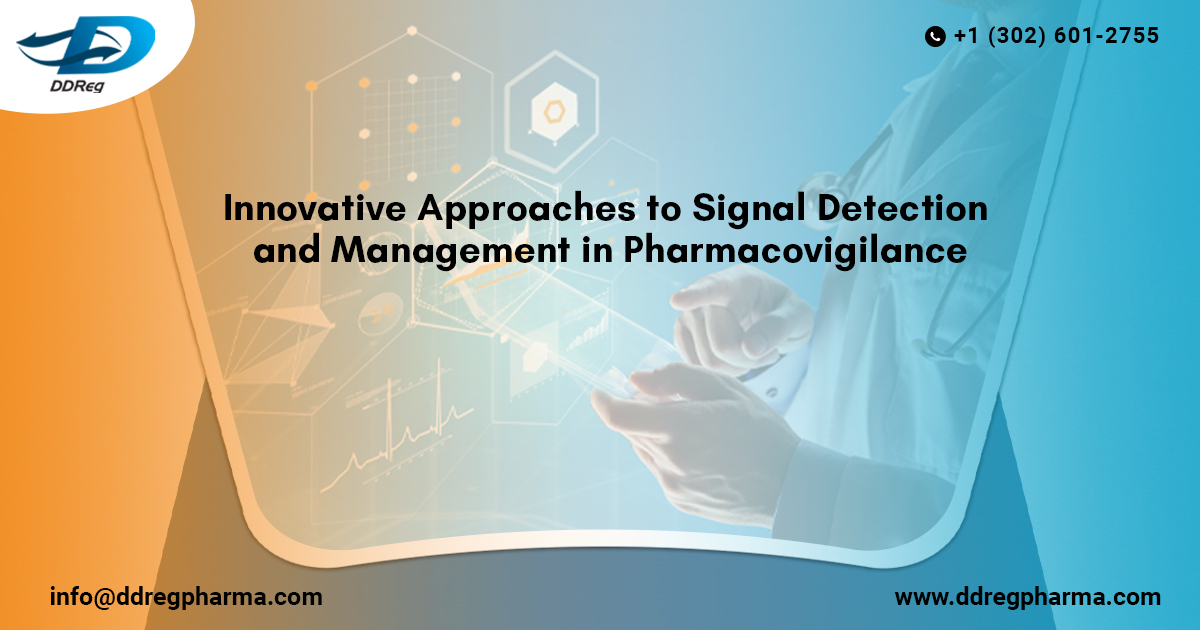At the heart of pharmacovigilance lies Signal Management, a vital process that serves as the backbone of modern pharmacovigilance. This blog will delve into the importance of signal management, how it works, and why it is indispensable for drug safety and regulatory compliance.
Understanding Signal Management in Pharmacovigilance
Before we explore why signal management is so critical, it’s essential to understand what it entails. Signal Management in Pharmacovigilance refers to the process of identifying, evaluating, and interpreting potential safety signals that arise from the analysis of data on adverse drug reactions (ADRs). A “signal” in this context is defined as information that suggests a new, previously unknown adverse event or a new aspect of a known adverse event related to a drug, which may necessitate further investigation.
Signal management involves a series of steps, including PV signal detection, signal validation, signal assessment, prioritization, and finally, decision-making on the necessary regulatory actions or communication strategies. This systematic approach ensures that potential risks are identified early, evaluated thoroughly, and managed effectively, thereby safeguarding public health.
The Role of Signal Management in Modern Pharmacovigilance
In the past, pharmacovigilance primarily focused on reactive measures—responding to adverse events as they were reported. However, the modern landscape of drug safety demands a more proactive approach. PV Signal Management enables pharmaceutical companies and regulatory authorities to detect early warning signs of potential risks associated with a drug, even before they become widespread issues.
This proactive stance is crucial because it allows for timely interventions, such as updating safety information, issuing warnings, or even withdrawing a product from the market if necessary. By identifying and addressing risks early, signal management reduces the likelihood of harm to patients and enhances the overall safety profile of drugs.
Integration of Big Data and Advanced Analytics
The rise of big data and advanced analytics has revolutionized pharmacovigilance Consulting Firms, making signal management more sophisticated and effective than ever before. With the ability to analyze vast amounts of data from diverse sources—such as electronic health records, social media, clinical trials, and spontaneous reporting systems—pharmaceutical companies can now detect signals with greater accuracy and speed.
Signal Management in Pharmacovigilance harnesses these technological advancements to identify patterns and correlations that might be missed by traditional methods. Machine learning algorithms, for example, can sift through massive datasets to pinpoint potential signals, reducing the reliance on manual analysis and increasing the chances of catching rare or unexpected adverse events.
Global Regulatory Compliance
In an increasingly globalized pharmaceutical market, regulatory compliance is more complex than ever. Different countries have their own regulations and standards for drug safety, and companies must navigate these varying requirements while ensuring that their products remain safe for patients worldwide. Signal management plays a critical role in this regard.
Signal Management in Pharmacovigilance helps companies maintain compliance with global regulatory pharma software by ensuring that they are constantly monitoring and evaluating drug safety data. By demonstrating a robust signal management process, companies can build trust with regulatory authorities and expedite the approval of their products in different markets. Moreover, effective signal management can prevent costly delays, fines, or product withdrawals that might arise from non-compliance.
How Signal Management Ensures Continuous Drug Safety
One of the most significant contributions of signal management to modern pharmacovigilance is its ability to detect adverse drug reactions (ADRs) early. ADRs can range from mild side effects to severe, life-threatening conditions. Detecting these reactions as soon as they emerge is crucial for minimizing harm to patients.
Signal Management in Pharmacovigilance employs a variety of methods to detect ADRs, including statistical analysis, data mining techniques, and case reports. By continuously monitoring data from various sources, signal management can identify potential ADRs that might otherwise go unnoticed. Once a signal is detected, it undergoes rigorous evaluation to determine its validity and potential impact, ensuring that any necessary actions are taken promptly.
Prioritization of Safety Signals
Not all signals are created equal. Some may indicate serious, urgent risks, while others might be less significant or even false positives. Effective signal management involves prioritizing signals based on their potential impact on patient safety and public health.
This prioritization process is vital for ensuring that resources are allocated appropriately and that the most critical signals receive the attention they deserve. By focusing on high-priority signals, pharmacovigilance teams can take swift action to mitigate risks, protect patients, and maintain the integrity of the drug safety process.
Facilitation of Informed Decision-Making
Signal management provides the data and insights necessary for informed decision-making in pharmacovigilance. Whether it’s deciding to update a drug’s labeling, conducting further research, or communicating new safety information to healthcare professionals and patients, signal management ensures that these decisions are based on robust evidence.
In the absence of effective signal management, decision-makers would be left with incomplete or outdated information, potentially leading to poor outcomes for patients. By providing a clear, evidence-based understanding of drug safety issues, signal management empowers pharmaceutical companies and regulatory authorities to make decisions that prioritize patient safety.
Challenges in Signal Management and How to Overcome Them
Dealing with Data Overload
The sheer volume of data generated in modern pharmacovigilance can be overwhelming. With data coming from clinical trials, spontaneous reporting systems, electronic health records, and more, distinguishing between meaningful signals and noise is a significant challenge.
To overcome this, Signal Management in Pharmacovigilance must leverage advanced data analytics tools and techniques. Machine learning algorithms, natural language processing, and other AI-driven technologies can help sift through large datasets, identifying relevant signals more efficiently and accurately. Additionally, continuous training and education for pharmacovigilance professionals on the latest technologies and methodologies are crucial for staying ahead in this data-intensive field.
Ensuring Consistency and Standardization
Signal management processes must be consistent and standardized across different teams and regions to ensure that signals are evaluated and managed uniformly. Inconsistent approaches can lead to discrepancies in how signals are interpreted and acted upon, potentially jeopardizing patient safety.
Pharmaceutical companies can address this challenge by implementing standardized protocols and guidelines for signal management. Regular audits and assessments of the signal management process can also help ensure that best practices are followed consistently across the organization.
Balancing Speed with Thoroughness
In pharmacovigilance, there is often a tension between the need for speed and the need for thoroughness. On one hand, signals must be detected and acted upon quickly to protect patients. On the other hand, a hasty response to an unverified signal could lead to unnecessary alarm or inappropriate actions.
The key to balancing these demands lies in having a robust, well-defined signal management process that allows for rapid yet thorough evaluation of signals. By prioritizing signals based on their potential impact and ensuring that all relevant data is considered, pharmacovigilance teams can make timely decisions without compromising on the quality of their assessments.
The Future of Signal Management in Pharmacovigilance
Incorporating Real-World Evidence
As the field of pharmacovigilance evolves, real-world evidence (RWE) is becoming increasingly important in signal management. RWE refers to data collected outside of traditional clinical trials, such as patient registries, electronic health records, and even social media. This data provides valuable insights into how drugs perform in real-world settings, complementing the controlled data from clinical trials.
Incorporating RWE into Signal Management in Pharmacovigilance allows for a more comprehensive understanding of drug safety, helping to identify signals that might not emerge in a controlled trial environment. As technology continues to advance, the integration of RWE will become a standard practice in signal management, further enhancing the ability to detect and manage safety signals.
Leveraging Artificial Intelligence and Machine Learning
Artificial intelligence (AI) and machine learning (ML) are poised to revolutionize signal management in pharmacovigilance. These technologies can analyze vast amounts of data faster and more accurately than traditional methods, identifying patterns and correlations that might be missed by human analysts.
AI-driven tools are already being used to automate aspects of signal detection, prioritization, and evaluation, making the process more efficient and reliable. As these technologies continue to develop, their role in signal management will only grow, helping pharmacovigilance teams to stay ahead of emerging risks and maintain the highest standards of drug safety.
Conclusion
Signal Management in Pharmacovigilance is, without a doubt, the backbone of modern drug safety practices. By enabling early detection, prioritization, and informed decision-making, signal management ensures that pharmaceutical companies can protect patients, maintain regulatory affairs services, and uphold the integrity of their products. As the field of pharmacovigilance continues to evolve, driven by advances in technology and data analysis, signal management will remain a cornerstone of efforts to ensure the safety and effectiveness of drugs around the world.




